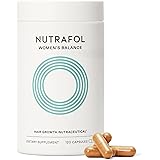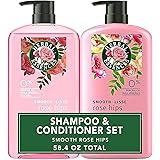Introduction to Asiatic Acid
Asiatic acid is a triterpenoid compound primarily derived from the Centella Asiatica plant, commonly known as Gotu Kola. This perennial herb has a rich history dating back centuries, utilized extensively in traditional Ayurvedic and Chinese medicine for its diverse therapeutic properties. The plant is renowned for its ability to promote healing and bolster skin health, making asiatic acid a focal point in both ancient remedies and modern scientific research.
The historical applications of Centella Asiatica often revolved around its wound-healing capabilities and its role in improving skin conditions. Practitioners of traditional medicine acknowledged the plant’s capacity to stimulate collagen production, enhance hydration, and reduce inflammation. These benefits are attributed primarily to asiatic acid and its derivatives, such as madecassoside and asiaticoside, all of which contribute to the plant’s effectiveness in skin treatments.
In recent years, there has been a notable surge in scientific interest in asiatic acid. Researchers have conducted numerous studies to investigate its potential dermatological applications, highlighting its antioxidant, anti-inflammatory, and antibacterial properties. These findings have positioned asiatic acid as a powerful compound for addressing a variety of skin issues, including acne, eczema, and signs of aging. The acknowledgment of its benefits by contemporary science underscores the importance of asiatic acid, bridging the gap between traditional knowledge and modern skincare practices.
Furthermore, as the demand for natural ingredients in skincare continues to rise, asiatic acid is increasingly being incorporated into formulations, appealing to consumers seeking holistic and effective solutions for their skin health. The subsequent sections will delve into the specific benefits that asiatic acid offers, illustrating its pivotal role in modern skincare and its contributions to maintaining healthy skin.
Antioxidant Properties
Asiatic acid is a prominent compound found in the Centella Asiatica plant, widely recognized for its remarkable skin health benefits, particularly its strong antioxidant properties. Antioxidants play a crucial role in protecting the skin from oxidative stress, a detrimental process that occurs when free radicals—unstable molecules resulting from environmental factors such as UV exposure, pollution, and poor diet—overwhelm the body. This imbalance can lead to cellular damage, promoting premature aging and various skin conditions.
The mechanism through which asiatic acid acts as an antioxidant is multifaceted. It can neutralize free radicals, thereby reducing oxidative damage to skin cells. Several studies have demonstrated that asiatic acid not only helps mitigate oxidative stress but also supports the skin’s innate repair mechanisms. One notable study published in a reputable dermatology journal highlighted that topical applications of asiatic acid resulted in a significant decrease in markers of oxidative stress, indicating its potential to rejuvenate skin and diminish signs of aging, such as wrinkles and fine lines.
In addition to combating existing damage, asiatic acid aids in strengthening the skin barrier, enhancing its protective functions against environmental aggressors. By promoting collagen synthesis and improving skin hydration, the compound contributes to overall skin vitality and firmness. Furthermore, research suggests that asiatic acid can improve the appearance of hyperpigmentation and uneven skin tone, further reinforcing its status as a powerful antioxidant.
In essence, the antioxidant properties of asiatic acid offer a promising avenue for those seeking to improve skin health and combat the visible signs of aging. Incorporating products containing this compound into a skincare regimen may contribute significantly to maintaining youthful, healthy skin.
Wound Healing and Skin Repair
Asiatic acid, a key triterpenoid compound derived from the Centella Asiatica plant, has gained recognition for its exceptional properties in promoting wound healing and skin repair. This compound plays a pivotal role by stimulating collagen production, which is essential for skin structure and function. Collagen, the most abundant protein in the skin, empowers the dermis by providing strength and elasticity, thereby facilitating the healing process following injury.
Research indicates that asiatic acid enhances skin regeneration by activating fibroblasts, the cells responsible for synthesizing collagen and other extracellular matrix components. Clinical studies have demonstrated that the presence of asiatic acid in topical formulations significantly accelerates the healing of wounds and burns. For instance, a controlled study involving burn patients revealed that those treated with asiatic acid-infused ointments experienced shorter healing times and improved skin integrity compared to those receiving standard care.
Moreover, asiatic acid has been noted for its ability to reduce scar formation. Upon injury, the skin undergoes a complex healing process involving inflammation, tissue formation, and remodeling. Asiatic acid helps modulate these stages, promoting a more organized tissue repair and minimizing the appearance of hypertrophic scars. A randomized controlled trial published in a dermatology journal highlighted that participants treated with asiatic acid reported significantly reduced scar redness and texture, showcasing the compound’s effectiveness in refining the healing landscape.
In addition to its biological effects, asiatic acid is often incorporated into cosmetic products aimed at improving skin texture and tone, resulting in benefits beyond mere wound healing. Overall, the multifaceted nature of asiatic acid positions it as an invaluable asset in dermatological therapeutics, especially in the contexts of skin repair and regeneration.
Anti-Inflammatory Effects
Asiatic acid, a natural compound predominantly found in Centella Asiatica, is recognized for its remarkable anti-inflammatory properties that significantly benefit skin health. This compound plays a critical role in soothing irritated skin, reducing redness, and alleviating various dermatological conditions like eczema and psoriasis. Inflammation is a common response of the skin to various stressors, including environmental factors, allergens, and skin disorders. Asiatic acid intervenes in this process by modulating the body’s inflammatory response.
The mechanism through which asiatic acid exerts its calming effects can be attributed to its ability to inhibit pro-inflammatory cytokines. These cytokines are signaling proteins that promote inflammation and contribute to the development of skin conditions characterized by redness, swelling, and discomfort. By decreasing the production of these inflammatory mediators, asiatic acid can help restore the skin’s natural balance, leading to a significant reduction in symptoms associated with inflammation.
Clinical studies have provided robust evidence of asiatic acid’s effectiveness in managing inflammatory skin conditions. Research has shown that patients suffering from eczema exhibited marked improvement in skin hydration and reduction in itching and redness after treatment with asiatic acid. Similarly, studies focusing on psoriasis have indicated that asiatic acid can lower the severity of flare-ups and enhance the overall health of the affected areas. Furthermore, its antioxidant properties also contribute to its anti-inflammatory effects, as they can counteract oxidative stress—another contributor to skin inflammation. Through these mechanisms, asiatic acid emerges as a promising ingredient for those seeking relief from irritated and inflamed skin.
Moisturizing Benefits
Asiatic acid, a triterpenoid compound derived from the Centella Asiatica plant, is renowned for its ability to enhance skin hydration significantly. One of its primary roles in skincare is to boost the skin’s moisture retention capabilities. By improving the skin’s barrier function, asiatic acid helps to maintain the optimal levels of hydration, which is essential for overall skin health and appearance.
The skin barrier plays a crucial role in preventing moisture loss while keeping irritants and pollutants at bay. Asiatic acid aids in fortifying this barrier, making it effective for individuals dealing with dry or dehydrated skin conditions. When incorporated into a skincare routine, asiatic acid works synergistically with other hydrating ingredients to create a protective layer that locks in moisture, thus preventing dryness and promoting a supple complexion.
<pmany absorption="" acid="" after="" agents="" allows="" and="" application,="" apply="" asiatic="" benefits="" better="" can="" capabilities,="" cleansing="" containing="" creams,="" currently="" deeper="" dermis.="" enhance="" ensures="" extend="" following="" for="" formulations,="" further="" hyaluronic="" hydration,="" including="" into="" is="" it="" its="" layers="" leading="" like="" lotions.="" method="" moisturizing="" more="" occlusive="" of="" optimal="" p="" pairing="" plumper="" products="" recommended="" resilient="" serums,="" skin.="" skin.
Additionally, individuals should consider using asiatic acid products consistently for optimal results. Typically, a usage frequency of once or twice daily can yield noticeable improvements in skin hydration levels. As a result, incorporating asiatic acid into your daily skincare routine not only aids in moisture retention but also contributes to a healthier, more radiant complexion.
Improving Skin Elasticity
Asiatic acid, a triterpenoid compound derived from the Centella Asiatica plant, plays a pivotal role in enhancing skin elasticity, which is crucial for maintaining a youthful appearance. Skin elasticity is the skin’s ability to stretch and recover, and it directly impacts the firmness and resilience of the skin. As we age, the natural production of proteins such as collagen and elastin decreases, leading to sagging and wrinkles. Asiatic acid addresses this concern by stimulating the synthesis of these essential proteins, thereby improving skin elasticity.
Research indicates that asiatic acid promotes fibroblast activity, which is responsible for producing collagen and elastin in the dermis. By enhancing the activity of these cells, asiatic acid encourages the regeneration of healthy skin structure, resulting in improved firmness and elasticity. Additionally, this compound aids in the repair of damaged skin, further contributing to its overall strength and suppleness.
Moreover, the use of asiatic acid in skincare formulations is linked with notable hydration benefits. Well-hydrated skin is inherently more elastic, as moisture helps maintain skin turgor and prevents dryness—a factor that can exacerbate the appearance of fine lines and wrinkles. By incorporating asiatic acid into a skincare routine, individuals can experience increased hydration levels, which consequently supports skin elasticity.
In essence, asiatic acid serves as an effective ally in the quest for youthful and resilient skin. Its multifaceted approach not only boosts the production of critical proteins but also enhances hydration levels, making it a valuable component in skin health products aimed at improving elasticity. The integration of asiatic acid into daily skincare regimens can help individuals achieve a more supple, firm, and youthful complexion, significantly benefiting their overall skin health.
Protection Against UV Damage
Asiatic acid, a compound derived from the Centella Asiatica plant, has garnered attention for its protective benefits against ultraviolet (UV) damage. Research indicates that asiatic acid plays a significant role in shielding the skin from harmful UV radiation, which is a major contributor to skin issues such as sunburn and increased risk of skin cancer. Understanding the photoprotective effects of this compound can help individuals adopt better skincare practices in sunlight exposure.
The primary mechanism through which asiatic acid exerts its protective benefits lies in its ability to enhance the skin’s natural defense mechanisms. It has been shown to promote the production of antioxidants in the skin, which are crucial for neutralizing free radicals generated by UV radiation. By mitigating oxidative stress, asiatic acid can reduce the damaging effects of UV rays, thereby lowering the risk of sunburn and other skin damage.
Additionally, studies have demonstrated that asiatic acid may stimulate the repair processes of damaged DNA in skin cells. This is particularly vital as UV exposure can lead to mutations that ultimately result in skin carcinogenesis. The application of asiatic acid has been found to counteract these effects, allowing for the recovery of skin cells and maintaining skin health over time.
Furthermore, the anti-inflammatory properties of asiatic acid can soothe the skin, further protecting it from the irritation commonly associated with sun exposure. Using products that contain asiatic acid may enhance the overall resilience of the skin against UV damage. As a natural and effective ingredient, asiatic acid presents a promising option for those looking to bolster their skincare regime with palliative measures against UV exposure.
Synergistic Effects with Other Ingredients
Asiatic acid, a prominent compound derived from the Centella Asiatica plant, exhibits remarkable benefits for skin health. However, its efficacy can be significantly enhanced when combined with other potent skincare ingredients. By understanding these synergistic effects, skincare enthusiasts can maximize the benefits of their routines.
One of the most notable combinations is that of asiatic acid with hyaluronic acid. Hyaluronic acid is celebrated for its exceptional ability to retain moisture in the skin. When used alongside asiatic acid, the hydration provided by hyaluronic acid can prevent moisture loss, allowing asiatic acid to work more effectively. This dual-action enhances overall skin hydration, leading to improved skin texture and elasticity, ultimately fostering a more youthful appearance.
Another beneficial pairing is asiatic acid with vitamin C. Vitamin C is widely recognized for its antioxidant properties and ability to brighten the skin. When combined with asiatic acid, the antioxidants in vitamin C may bolster the healing properties of asiatic acid, providing enhanced protection against environmental stressors. This collaboration not only aids in fading hyperpigmentation but also promotes a clearer and more radiant complexion.
Furthermore, asiatic acid can work harmoniously with peptides. Peptides are essential for supporting the skin’s natural regeneration processes. Their inclusion in a skincare regimen alongside asiatic acid can amplify collagen production, leading to firmer skin. This powerful combination addresses various signs of aging, boosting overall skin health and appearance.
Incorporating asiatic acid into skincare routines, especially in conjunction with other key ingredients such as hyaluronic acid, vitamin C, and peptides, can yield impressive results. By leveraging these synergistic effects, individuals can achieve optimal hydration, enhanced protection, and improved skin vitality, reinforcing the incredible benefits of asiatic acid for skin health.
Conclusion and Recommendations
In conclusion, asiatic acid emerges as a remarkable compound that offers numerous benefits for skin health. Its ability to promote collagen synthesis, enhance wound healing, and provide anti-inflammatory properties positions it as a valuable ingredient in the realm of skincare. By incorporating asiatic acid into your daily routine, individuals can potentially experience improved skin elasticity, reduced signs of aging, and a more even complexion.
For those interested in utilizing asiatic acid, there are various product options available. Look for serums or creams that specifically highlight asiatic acid as a key ingredient. These products often combine asiatic acid with other beneficial components such as hyaluronic acid or peptides, further enhancing their effectiveness. When selecting a product, consider factors such as skin type and specific concerns, as this will aid in finding the most suitable formulation.
Integrating asiatic acid into your skincare regimen can be straightforward. Begin with a patch test to ensure no adverse reactions occur. Once established, consider applying an asiatic acid product in the morning and evening after cleansing. It can be layered under moisturizers or sunscreens, allowing for a comprehensive routine that maximizes its benefits. Regular use is essential; consistency will enable the skin to reap the full advantages of this impressive ingredient.
Furthermore, it is beneficial to combine asiatic acid with a broad-spectrum sunscreen during the day. This is vital as it protects the skin from UV damage, which is one of the most significant factors contributing to premature aging. With thoughtful application and consistent use, asiatic acid can be a transformative addition to a holistic skincare approach.







Оформите займ https://zaimy-71.ru онлайн без визита в офис — быстро, безопасно и официально. Деньги на карту за несколько минут, круглосуточная обработка заявок, честные условия и поддержка клиентов 24/7.
Перейти до деталей: https://mediaworld.com.ua/zdorovia.html
http://Jeffreywhaps
Сопровождение импорта сделало нашу работу проще и надёжнее: ВЭД сопровождение импорта
http://Jeffreywhaps
Сопровождение ВЭД деятельности помогает экономить время и снижает затраты: Сопровождение ВЭД